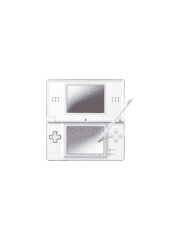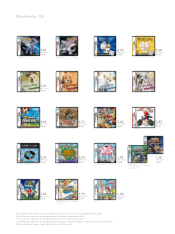Nintendo 2008 Annual Report Download - page 20
Download and view the complete annual report
Please find page 20 of the 2008 Nintendo annual report below. You can navigate through the pages in the report by either clicking on the pages listed below, or by using the keyword search tool below to find specific information within the annual report.16
Throughout the fiscal year ended March 31, 2008, the overall Japanese economy continued to show a pattern of recovery.
Intensified capital investment supported by improvements in corporate earnings, as well as moderate increase in exports, helped
to support the Japanese economy. Meanwhile, financial concerns have grown due to stagnant corporate earnings growth, due in
part to the consequence of the sub-prime home mortgage crisis in the U.S., rising oil prices and raw material cost increases.
Looking overseas, the U.S. economy has shown signs of a slowdown at the start of calendar year 2008, and a decrease in
employment on top of a significant decrease in housing investment. The European economy, which had remained strong, also
showed indications of moderate recession.
Under such circumstances, the video game industry continued to grow, driven by expansion of software sales, a growing
installed base of the new generation of console hardware as well as favorable handheld hardware sales over the past fiscal year.
Over the past years, Nintendo has continued to execute its strategy of expanding the gaming audience by offering a variety of
products which satisfy both novice as well as skilled gamers. For example, Nintendo has progressively driven sales of its handheld
software lineup known as “Touch! Generations”, for Nintendo DS, which has expanded the definition of video games. Nintendo’s
console gaming system, “Wii”, offers software which promotes fun with the conventional operation in addition to software with
intuitive operation using the “Wii Remote” and accessories. As a result, Nintendo has achieved record results in both net sales and
income. Net sales were 1,672.4 billion yen (US$16,724 million) increased by 73.0 percent from the previous fiscal year, operating
income was 487.2 billion yen (US$4,872 million) increased by 115.6 percent from the previous fiscal year, ordinary income was
440.8 billion yen (US$4,408 million) increased by 52.6 percent from the previous fiscal year, and net income was 257.3 billion yen
(US$2,573 million) increased by 47.7 percent from the previous fiscal year.
Overview
With respect to sales by business category within the electronic entertainment products division, “Nintendo DS” hardware
continued to enjoy robust sales worldwide, selling a total of 30.31 million units during the fiscal year (70.6 million units life-to-date).
“Nintendo DS” software made a strong contribution to sales in the category. For example, “Pokémon Diamond and Pearl” which
were released overseas after the launch in Japan last fiscal year, sold the combined total of 9.56 million units worldwide (14.77
million units life-to-date). In addition, both “Brain age: Train Your Brain in Minutes a Day!” and the sequel version “Brain Age 2:
More Training in Minutes a Day!” performed well, reaching the combined total of 11.81 million units (23.81 million units life-to-
date). Furthermore, new release titles such as “Mario Party DS” and “The Legend of Zelda: Phantom Hourglass”, as well as the
long seller titles such as “Nintendogs” series and “New Super Mario Bros.”, recorded strong sales. As a result, Nintendo DS
continued to enjoy favorable software sales as the number of million-seller titles life-to-date (licensee titles included) increased
from 30 to 57 compared with that of the last fiscal year.
In the console business, “Wii” hardware, which was launched last fiscal year, sold a total of 18.61 million units worldwide (24.45
million units life-to-date). As for “Wii” software, “Wii Fit”, (which uses the “Wii Balance Board” to assist you and your family
members to achieve improved fitness while having fun at same time) was launched in Japan, selling a total of 1.85 million units.
“Super Smash Bros. Brawl”, (which is the latest action game offering battle competition through the internet), was launched in
Japan and the U.S., selling a total of 1.61 million units, and 3.24 million units, respectively. In addition, “Wii Sports” and “Wii
Play”, released in the previous fiscal year and “Super Mario Galaxy” and “Mario Party 8”, have enjoyed favorable sales as well.
These titles contributed to a significant rise in console software sales in the fiscal year and the number of million-seller titles life-to-
date (licensee titles included) increased from 5 to 26 compared with that of the last fiscal year.
As a result, net sales in the electronic entertainment products division were 1,668.7 billion yen (US$16,687 million) increased by
73.0 percent from the previous fiscal year, while sales in the other products division (playing cards, karuta, etc.) were 3.6 billion yen
(US$36 million) increased by 68.5 percent from the previous fiscal year.
Revenue and Expenses
Analysis of Operations and Financial Review
























